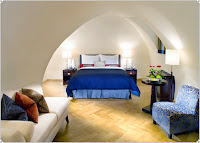Interior Design

Interior design
Interior designers work on designing the interior space of hotels, corporate spaces, schools, hospitals, and private residences. Interior design is not to be confused with interior decoration which is focused on choosing color palettes with complementary furniture, flooring, window coverings, artwork, and lighting. Today, interior designers must be attuned to architectural detailing including: floor plans, home renovations, and construction codes. Interior design draws on aspects of environmental psychology, architecture, and product design in addition to traditional decoration (aesthetics and cosmetics). An interior designer is a person who designs interiors as part of their job. Interior design is a creative practice that analyzes programmatic information, establishes a conceptual direction, refines the design direction, and produces graphic communication and construction documents.
Interior designers can specialize in a particular interior design discipline, such as residential and commercial design, they can also help with making rooms in the hospital and even work with schools to make offices or another things with some developing expertise within a niche design area such as hospitality, health care and institutional design. In jurisdictions where the profession is regulated by the government, designers must meet broad qualifications and show competency in the entire scope of the profession, not only in a specialty. Designers may elect to obtain specialist certification offered by private organizations. Interior designers who also possess environmental expertise in design solutions for sustainable construction can receive accreditation in this area by taking the Leadership in Energy and Environmental Design (LEED) examination.
The specialty areas that involve interior designers are limited only by the imagination and are continually growing and changing. With the increase in the aging population, an increased focus has been placed on developing solutions to improve the living environment of the elderly population, which takes into account health and accessibility issues that can affect the design. Awareness of the ability of interior spaces to create positive changes in people's lives is increasing, so interior design is also becoming relevant to this type of advocacy.
There is a wide range of disciplines within the career of interior design. Some of the disciplines include: structure, function, specialized performance, special group needs, discipline needed for business, computer technology, presentation skills, craft skills, social disciplines, promotional disciplines, professional disciplines, aesthetic disciplines, and disciplines with cultural implications. This list shows how interior designing encompasses many different disciplines and requires both education in science and technology as well as being moved.
Regardless of the building-type the process is identical. The first step is determining the client's objectives, timescale and budget. This is called taking a Brief. The objective is nearly always to improve revenue for the client - even householders will be considering the resale value of their home. The designer will then provide a Fee Proposal which outlines their design input and the cost for this. It will be made clear whether the interior design practice will procure goods and/or project manage and the costs or margins for this also. Working drawings are required prior to any design work, these are detailed survey drawings of the existing space. The very first step once commissioned on the project will be creating these drawings if none already exist.
Today, designers use computer-aided design (CAD) although hand sketches are still valued for their "personality". CAD is a program used to communicate design solutions in realistic views at various angles. This program eliminates long hours of hand-drawing and sketching.
Following the survey and working drawing, the initial concepts will be presented to the client for approval. If approved this is followed by the floor plans and then the detailed specifications of all alterations, finishes and furnishings. It is probable that doors, windows and walls will be repositioned. Also, of major importance is the approach to the building - so the exterior is always considered along with the interior design.
Naturally, only if the design practice handles procurement or project management will they take on these roles. Many design specifications will be included in a tender package which will ultimately be used by a building contractor, or fit-out contractor as it is often called, to complete the design for the client. The on-site stage of the design can be many months or even years after the design specification is completed.
The working conditions and places of employment vary within the career of interior design. Large corporations that hire interior designers usually provide regular day-to-day working hours. Designers for smaller firms usually work on a contract, or job basis. Designers frequently adjust their working hours to suit client's needs, which could result in working over time, in the evening, or on the weekends. Self employed designers usually work the most hours. Interior designers work under stress to meet deadlines, stay on budgets, and meet clients' needs. Self-employed designers are under pressure to find clients to provide for themselves an income. Traveling to different locations, studios, or clients' homes and offices is something often done. With the aid of computer technology the process of contacting clients and communicating design alternatives has become a lot easier and requires less travel.
References;
Ball, Victoria K.; Opportunities In Interior Design and Decorating Careers.
Farr, Michael; Top 100 Careers for College Students. 7th ed.
Comments